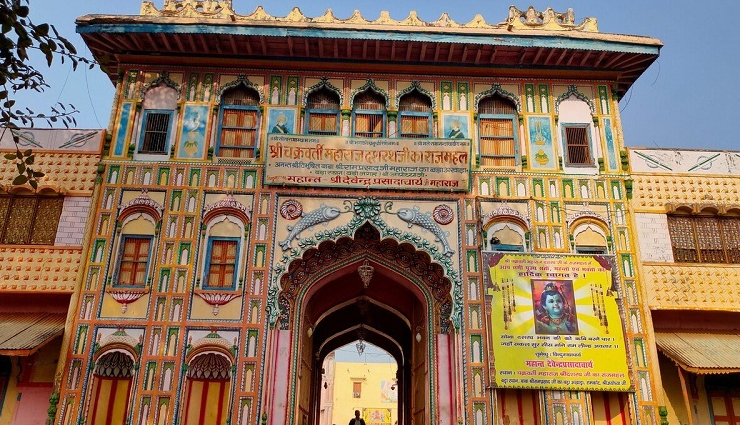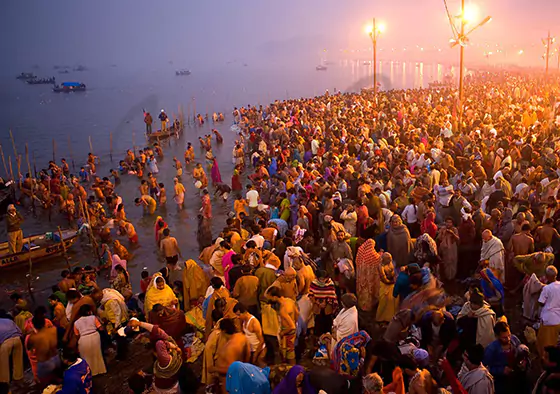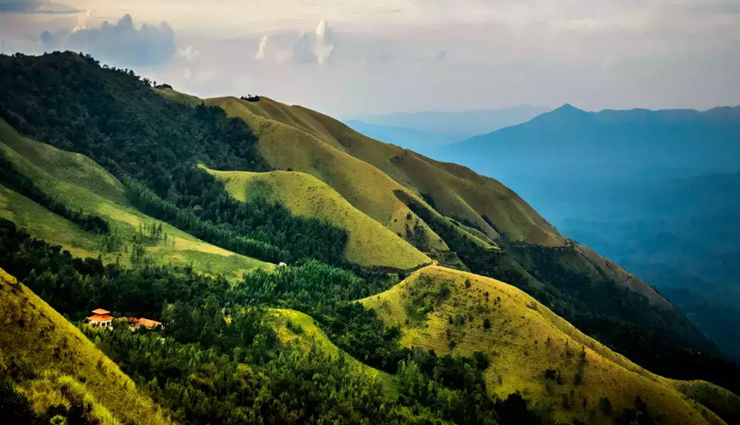Ayodhya is an ancient city in India best known as the setting of the Hindu epic Ramayana. Ayodhya, the birthplace of Lord Shri Ram, is located in Uttar Pradesh. Which is one of the oldest cities in the country. The earlier name of this city was Faizabad, whose name has been changed to Ayodhya. Ayodhya is considered to be the birthplace of Lord Shri Ram, which is situated on the banks of river Saryu. The construction work of the grand temple of Lord Shri Ram has started in Ayodhya, people are reaching Ayodhya to see it. But apart from this, many religious places in Ayodhya make Ayodhya sacred. If you are also going to Ayodhya, then do visit them.

Sita's kitchen
Mother Sita, wife of Lord Shri Ram, is worshiped as much as Lord Ram. A small temple of Mata Sita is situated in Ayodhya. This temple, known as Sita's Kitchen, is located about half an hour away from the Saryu River. Here you can see a symbolic kitchen made of traditional utensils. Here you can have a different experience.
Hanuman Garhi
Hanuman Garhi is one of the major religious places of Ayodhya. Hanuman Garhi has a temple dedicated to Hanuman, which has its religious significance. This temple site earlier belonged to the Nawab of Awadh, who donated it for the construction of the temple. This temple is situated on a hilltop and was built in the 10th century. To reach the temple, travelers have to go through 76 stairs. The idol of Hanuman ji located in the temple welcomes the devotees. The top of the hill offers a spectacular view of the surrounding hills. People of the Hindu religion come to visit this temple in large numbers and have a darshan of Hanuman ji and also pray for salvation from their sins. There is also a belief about Hanuman Garhi that whatever devotees come here and wish with true heart, God fulfills their wishes.
Thakur of Treta
Located near the Naya Ghat of Ayodhya, the Thakur Temple of Treta has several idols including those of Lord Rama, Sita, Lakshman, Hanuman, Bharat, and Sugriva. It is said that these statues have been carved from a single black sandstone. Treta Ke Thakur is believed to have been built 300 years ago by the then King of Kullu. It is said that this structure is situated on the same ground as the famous Ashwamedha Yagya performed by Lord Rama. The temple was again given a facelift by the then-Maratha queen Ahilyabai Holkar in the 1700s. It is open to the public only once a year on the day marked as Ekadashi.
Nageshwar Nath Temple
Nageshwar Nath temple is present in Ram Ki Paidi. It is dedicated to Lord Shiva. It is believed that this temple was built by Kush, the younger son of Lord Shri Ram. It is said that once while bathing in the Saryu River, Kush's armlet was lost, which was returned by a snake girl. This temple was built for the snake girl who was infatuated with Kush. Lakhs of devotees and visitors come to this temple on the day of Shivratri.
Kanak Bhavan
Kanak Bhavan is a major tourist attraction in Ayodhya, where earlier there was another temple. It is said that this temple was given by Lord Ram's stepmother Kaikeyi to Sita after marriage. Let us tell you that later this temple was rebuilt by King Vikramaditya of the Paramara dynasty which was rebuilt again in 1891. Kanak Bhawan is one of the most attractive places in Ayodhya where its amazing architecture attracts everyone.

Tulsi Memorial Building
Tulsi Memorial Building, established in memory of 16th century saint-poet Goswami Tulsidas, is believed to be the place where Tulsidas composed Ramcharita. Located at the eastern end of the National Highway at Rajgang crossing in Ayodhya, the memorial was built in 1969 by the then Governor of Uttar Pradesh, Shri Vishwanath Das. You will get to see a storehouse of rich literature in the huge library. The memorial also has a research center named 'Ayodhya Research Institute'. It is used to add importance to the study and importance of literary, cultural, and spiritual information about Ayodhya. The center also displays Ramayan arts and crafts and has daily recitations of the Ramkatha.
Guitar Ghat
Situated on the banks of the Sarju River, this Guitar Ghat is known as a major pilgrimage site. There are many small temples here and the beautiful view here is enough to free the mind of the people. It is said that Lord Shri Ram had taken Jal Samadhi at this ghat. People come to this place in large numbers with the desire to attain salvation. This ghat was renovated during the 19th century. If we talk about the major centers of faith of this Guitar Ghat, then the names of Hanuman Temple, Ram Janaki Temple, Narasimha Temple, Old Charan Paduka Temple, etc. are included.
Devkali Devi Temple
Devkali Devi temple is a grand place in Ram Nagari Ayodhya. It is said about this temple that it is the temple of Shri Ram's Kuldevi. Devkali Devi temple is quite prominent among the people. Devotees come here in large numbers every year. There is a belief related to this temple that after coming here no person leaves empty-handed. Goddess Devkali of Lord Ram fulfills the wishes of all her devotees. The number of devotees here increases significantly during Ram Navami.
Moti Mahal
Moti Mahal, popularly known as the ‘Pearl Palace’, is an extremely attractive structure located a few kilometers from the city of Ayodhya in Faizabad. This palace was built in 1743 AD and was the home of Queen Begum Unmatuzohra Banu, wife of Nawab Shuja-ud-Daula. Moti Mahal is a fine example of Mughal architecture and is visited by a large number of tourists.

Dasaratha Palace
Dasharatha's palace of Lord Shri Ram's father is located in Ayodhya, which is known as Dasharatha Mahal. This place is called a pilgrimage site. Shri Ram and all his brothers spent their childhood at this place. The colorful and majestic entrance gate is the specialty of this place. Devotional songs are chanted here daily. The statues of Lord Shri Ram, Lakshman, and Sita have also been installed in this Dashrath Bhavan. Many people come to see this palace.
(PC: Lifeberyys)










